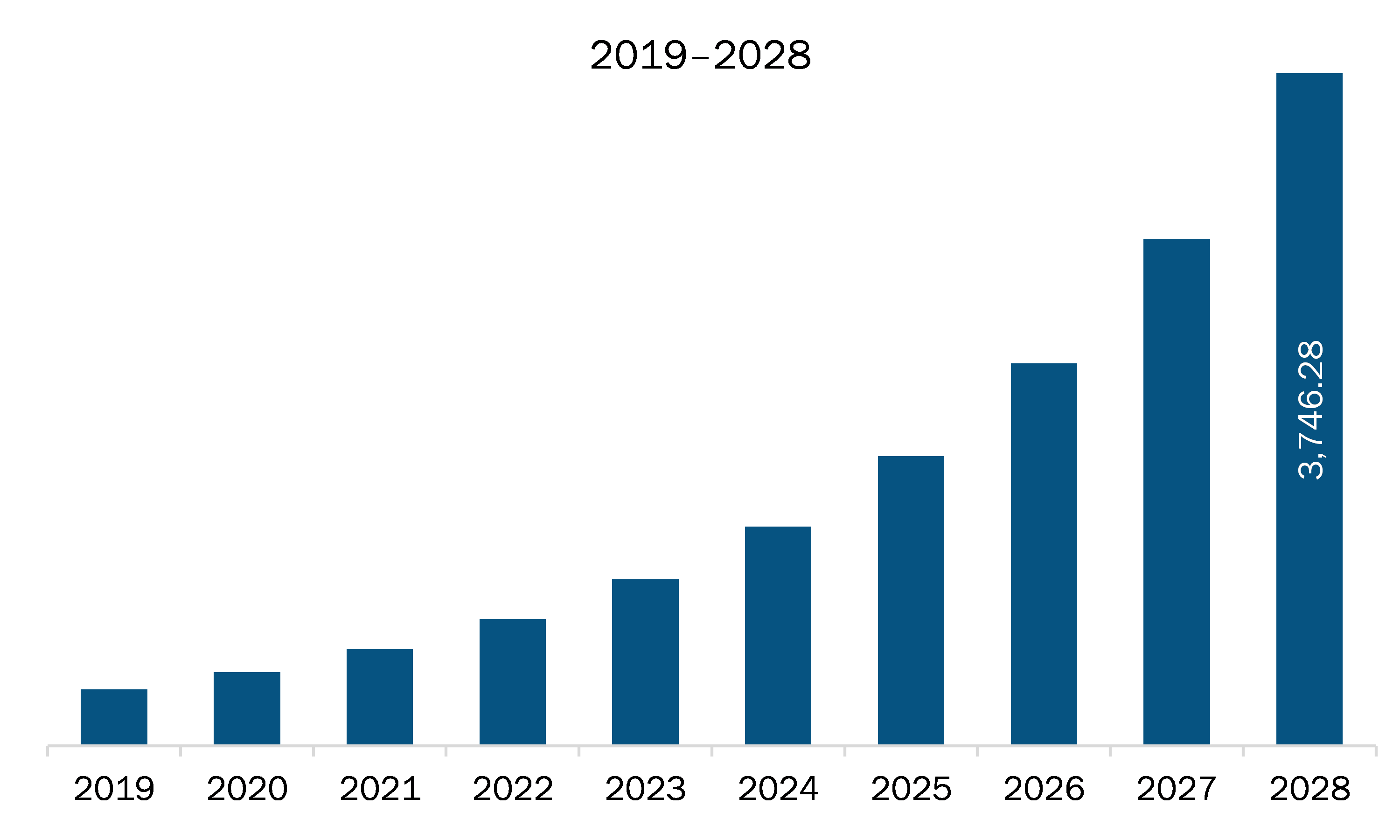The remote cardiac monitoring market in APAC is expected to grow from US$ 539.22 million in 2021 to US$ 3,746.28 million by 2028; it is estimated to grow at a CAGR of 31.9% from 2021 to 2028.
China, Japan, and India are major economies in APAC. Increase in incidence of cardiovascular diseases is the major factor driving the growth of the APAC remote cardiac monitoring market. Remote patient monitoring (RPM) allows patients to manage their health better by increasing their involvement in their health care. According to the World Health Organization (WHO), cardiovascular diseases (CVDs) are among the leading causes of death worldwide, and ~30 million people experience a stroke each year. Mortalities caused by CVDs in the Asia-Pacific countries range from less than 20% in countries such as Thailand, the Philippines, and Indonesia to 20–30% in urban China, Hong Kong, Japan, Korea, and Malaysia. Countries such as New Zealand, Australia, and Singapore have relatively high rates of 30–35%. Hypertension is a significant risk factor for CVD. RPM may serve as a vital conduit for improving hypertension control and reducing the economic burden stemming from prolonged or frequent hospital stays that result from acute hypertension-related events. Research has shown that RPM can significantly lower systolic blood pressure (SBP) and diastolic blood pressure (DBP) compared to usual care and self-monitoring alone. According to a few non-randomized trials, RPM can improve outcomes by enabling accurate and early detection as well as decreasing all-cause mortality rates and hospitalizations. Recent clinical guidelines strongly recommend the use of RPM for atrial fibrillation (AF) detection in both stroke and non-stroke patients, which is further anticipated to drive the Remote Cardiac Monitoring market in APAC.
The COVID-19 pandemic has critically influenced the region and has also allowed stakeholders to realign their future path based on strategic intent and focus. Moreover, various companies have been manufacturing patient monitoring devices with biosensors for easy and quick results. Reports have indicated that the usage of pulse oximeters in hospitals and at home has increased substantially amid this pandemic. The governments in a few countries are providing reimbursement for pulse oximeter purchases. For instance, in June 2020, the Union Health Ministry of India has decided to reimburse the cost of pulse oximeter purchased by beneficiaries Central Government Health Scheme (CGHS). They are tested positive as a supportive measure for COVID-19 patients monitoring at-home care during the pandemic.Moreover, in June 2021, Max Healthcare launched an artificial intelligence (AI)-powered device combined with a patient monitoring framework, declared the first in the nation. Max Healthcare has launched the service in partnership with MyHealthcare.Similarly, in February 2021, Remo Care Solutions (Kochi) launched Remo.Cardia a remote cardiac monitoring system powered by artificial intelligence that monitors and analyzes patients' vitals on a real-time basis. Thus, increasing government support and reimbursement policies for medical devices is expected to support the market of RPM devices.

- This FREE sample will include data analysis, ranging from market trends to estimates and forecasts.
APAC Remote Cardiac Monitoring Market Segmentation
APAC Remote Cardiac Monitoring Market – By Product Type
- Devices
- Vital Signs Monitors
- Heart Rate Monitors
- Blood Pressure Monitors
- Breath Monitors
- Holter Monitors
- Others
- Software
- Cloud Based Software
- On-Premise Software
- Services
APAC Remote Cardiac Monitoring Market – By End User
- Hospitals and Clinics
- Emergency Settings
- Homecare Settings
- Others
APAC Remote Cardiac Monitoring Market– By Country
- Japan
- China
- India
- South Korea
- Australia
- RoAPAC
APAC Remote Cardiac Monitoring Market-Companies Mentioned
- Abbott
- Biotronik, Inc.
- Boston Scientific Corporation
- GE Healthcare
- Honeywell International Inc.
- Koninklijke Philips N.V.
- Medtronic
- Nihon Kohden Corporation
- OSI Systems, Inc.
Asia Pacific Remote Cardiac Monitoring Report Scope
| Report Attribute | Details |
|---|---|
| Market size in 2021 | US$ 539.22 Million |
| Market Size by 2028 | US$ 3,746.28 Million |
| CAGR (2021 - 2028) | 31.9% |
| Historical Data | 2019-2020 |
| Forecast period | 2022-2028 |
| Segments Covered |
By Product Type
|
| Regions and Countries Covered |
Asia-Pacific
|
| Market leaders and key company profiles |
|
- Historical Analysis (2 Years), Base Year, Forecast (7 Years) with CAGR
- PEST and SWOT Analysis
- Market Size Value / Volume - Regional, Country
- Industry and Competitive Landscape
- Excel Dataset
Recent Reports
Testimonials
Reason to Buy
- Informed Decision-Making
- Understanding Market Dynamics
- Competitive Analysis
- Identifying Emerging Markets
- Customer Insights
- Market Forecasts
- Risk Mitigation
- Boosting Operational Efficiency
- Strategic Planning
- Investment Justification
- Tracking Industry Innovations
- Aligning with Regulatory Trends





















 Get Free Sample For
Get Free Sample For